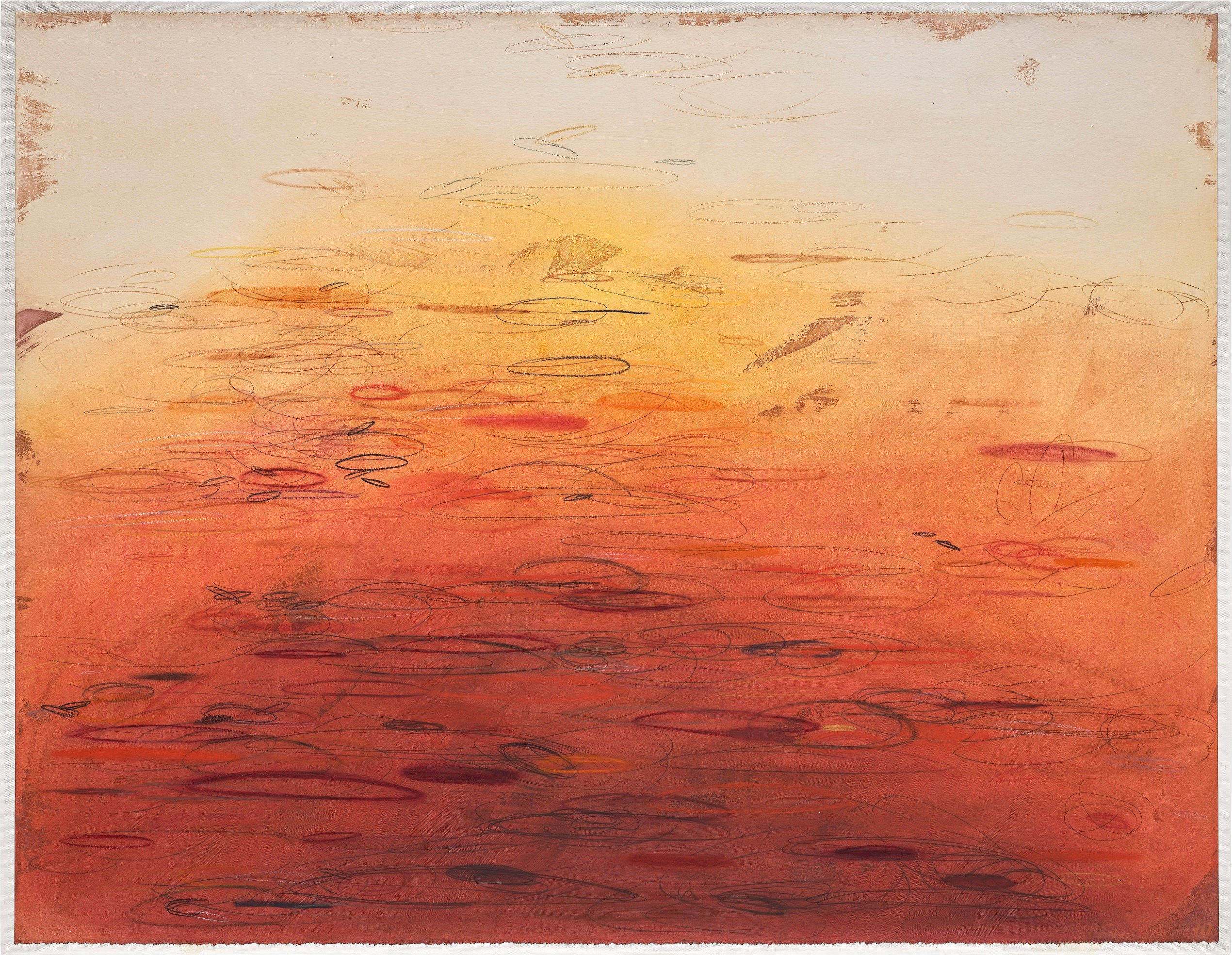
Work of the Week is excerpted from The Back Room, our lively recap funneling only the week’s must-know art industry intel into a nimble read you’ll actually enjoy. Artnet News Pro members get exclusive access—subscribe now to receive this in your inbox every Friday.
At Phillips’s Modern and contemporary day sale on May 16, this work by Emmi Whitehorse left its presale estimate in the dust, selling for $177,800—a whopping 888 percent more than anticipated. It not only reflects the current demand for Whitehorse specifically, but also broader market enthusiasm for work by Indigenous artists. The latest editions of both the Whitney Biennial and the Venice Biennale provide ample proof of that, and Whitehorse is one of the 333 artists whose work is featured in the main exhibition of the 60th Venice Biennale.
“There really is a clear groundswell around [Indigenous artists], which is wonderful to see,” said a Phillips representative.
Two paintings by Emmi Whitehorse. Photo by Ben Davis.
Canyon Lake I (2001) was the second auction record set for Whitehorse in as many days. On May 14, Sotheby’s sold #534 Untitled (1984) at its contemporary art day sale for $127,000 on an estimate of $15,000 to $20,000. Worth noting, too, is that her record before this had only been set in April, when a work on paper sold for $93,750 on a $30,000 low estimate at Larsen Art. Until 2022, Whitehorse’s prices topped out at just over $6,000.
Whitehorse is a Diné (Navajo) artist whose practice blends storytelling traditions with images from the natural world. In addition to the current Venice Biennale, Whitehorse’s work has been exhibited widely since 1979, and she was recently featured in major exhibitions at the Whitney Museum of American Art, New York, between 2019 and 2022, and the National Gallery of Art, Washington, D.C. this year.
“My work is about, and has always been about, land, about being aware of our surroundings and appreciating the beauty of nature,” Whitehorse said. “I am concerned that we are no longer aware of those things. I hope that the calm and beauty in my work serves as a reminder of what is underfoot, of the exchange we make with nature. Light, space, and color are the axis around which my work evolves. The act of making art must stay true to a harmonious balance of beauty, nature, humanity, and the whole universe. This is in accordance with Navajo philosophy.”